Diving deeper into reef citizen science
PRESS RELEASE
Citizen scientists gathering at Magnetic Island for Reefblitz 2025.
A surprising new leader in reef citizen science is the not for profit, Museum of Underwater Art (MOUA) based in Townsville which has reported the highest number of marine species observations for an individual reefs or island in Queensland for an iNaturalist project.
MOUA reported 8,103 observations of 622 species with 66 observers and 252 identifiers. The most commonly observed species was the Sixband Parrotfish Scarus frenatus.
The Museum of Underwater Art and Reef Ecologic share in the rising interest in community citizen science through collaborating on recent ReefBlitz and World Oceans Day events between 1-8 June. The activities led by MOUA’s science team, Dr David Vaughan of the US based, Plant a Million Corals Foundation, Distinguished Professor Peter Harrison from Southern Cross University, Dr Katharina Fabricius from AIMS and Dr Adam Smith, the CEO of Reef Ecologic. More than 500 people participated in activities held in Townsville between June 1-8 with partnerships with local diving and charter businesses. The Reef Ecologic and MOUA team also provide training, equipment and educational material such as field guides, videos, reports and scientific papers.
Deputy chair of the MOUA board and CEO of Reef Ecologic, Dr Adam Smith said;
“Australian citizen scientists love the Great Barrier Reef, our beaches, oceans and fishing, and marine citizen scientists have made over 200,000 observations in Queensland waters through the global INaturalist app. collecting photos in the aquatic or underwater environment, of corals, thousands of fish species, sharks, jellyfish and unknown creatures.”
Queensland Marine Citizen Science iNaturalist Project
The Museum of Underwater Art has attracted more visitors to Townsville than ever before in 2024/25 even in a period when Townsville tourism has been affected by the seasonal weather conditions. MOUA Chair, Paul Victory added;
“The interest in MOUA’s dive and snorkel site continues to rise globally. The opportunity for visitors to engage in the experience through ‘citizen science’ gives the visit extra special significance and enables visitors to learn more about the health of ‘coral reefs’ during their dive.”
Lizard Island Research Station and co-director (now retired) Dr Anne Hoggett AO has been a pioneer and leader in iNaturalist reef projects for many years. The Lizard Island Life projects has previously been number 1 with 7,710 observations of 1,541 species and has involved 181 observers and 756 identifiers. The most observed species is Gigas Giant Clam (Tridacna gigas).
Lizard Island Life iNaturalist Project
Citizen science (CS) is the engagement of the public as volunteers in a scientific project alongside scientists. Citizen science is growing rapidly with positive outcomes documented for ecological research, conservation, policy, innovation, and increased citizen stewardship. Interestingly there are also significant health benefits. Perhaps it has also grown due to improved technology and declining trust, reliance and funding from government.
Many citizen science projects are now led by citizens not scientists or government and focusing on practical real life projects. There are huge benefits for increasing community knowledge of biodiversity and collaborating with schools, business, government, scientists and managers.
It has recently been recognised that Australians estimated 1 million citizen scientists contribute more knowledge than scientists on some nationally significant data platforms such as Atlas of Living Australia. Many of these are volunteers, retired scientists, beach walkers, fishers, snorkelers, SCUBA divers and tourists who have observed and photographed an animal or plant (or recorded a sound) and uploaded it to an online social network such as iNaturalist to seek or share knowledge on biodiversity and nature. They have passion and a lifetime of knowledge and are volunteers with small or no funding.
The estimated Australian budget for community citizen science is estimated at $10 million pa and estimated benefits including in-kind contributions of $667 million to $2.5 billion annually. This indicates that for every dollar invested in citizen science there is a $66.7 t- 250 return in value.
Dr Adam Smith who is a Board member of MOUA and a keen citizen scientist has tried many different monitoring tools and apps and said that;
“while all have positives and negatives that iNaturalist is popular because it is global, easy and quick to use and very rapid identification of most species from artificial intelligence and peer review. Also there is a great depth of additional information available on species and the people who have observed and identified them which starts conversations, friendships and boosts knowledge and caring for the environment.”
More information
Comparison of 31 citizen science iNaturalist programs in Queensland
John Brewer Reef Marine Species Guide (Second Edition). June 2025
Contact us:
Dr Adam Smith: Adam.smith@reefecologic.org 0418726584
Jacinta Jefferies: jacinta@moua.com.au 0403943786


